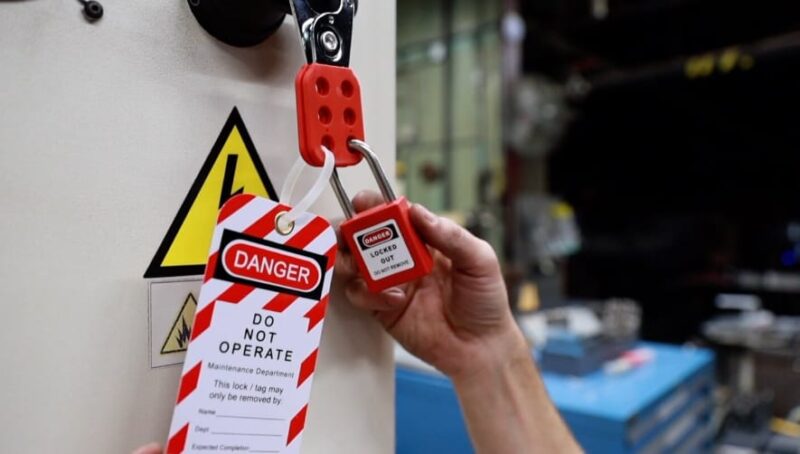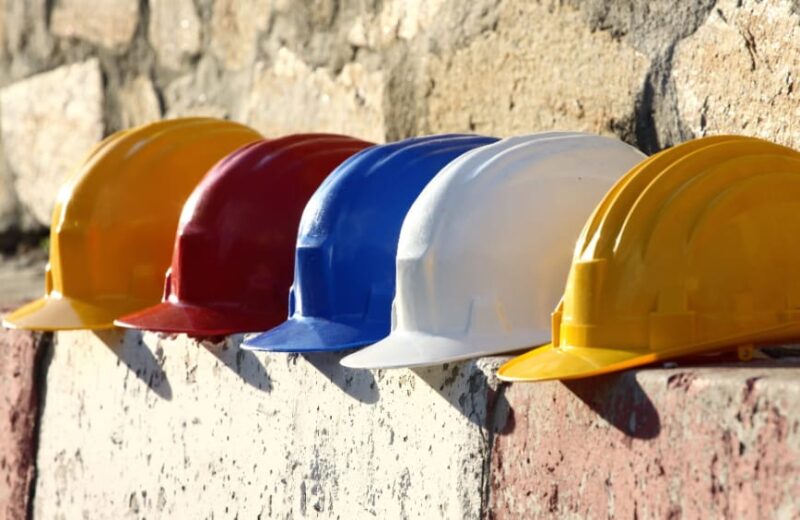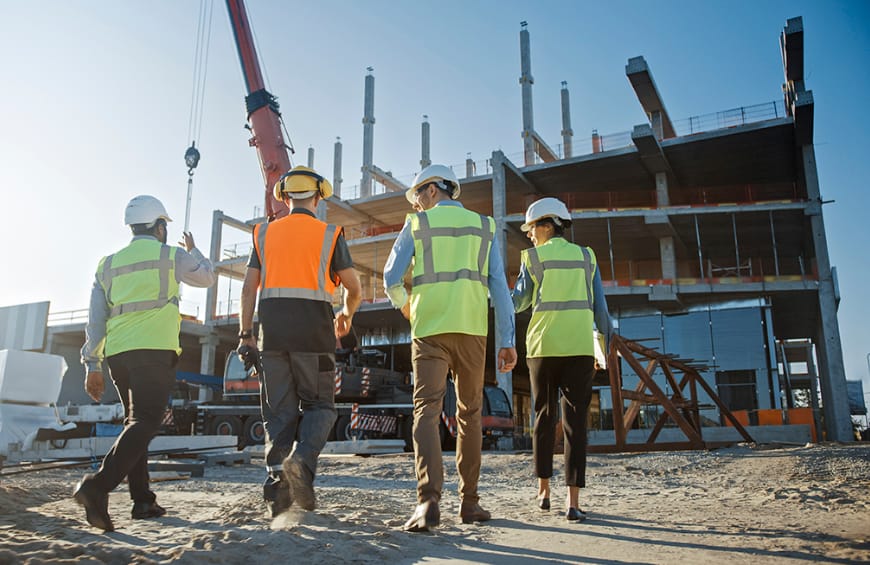Basic construction rules are designed to prevent accidents and protect workers from imminent danger. The four main categories of construction site dangers are falls, struck-by injuries, electrocutions, and caught-in-or-between injuries.
Known as the “Fatal Four,” these four categories of construction site accidents are constantly being addressed through construction site regulations and oversight by the Occupational Health and Safety Administration (OSHA). The regulations that address these issues form the basics of construction site rules.
Fall Protection and Training

OSHA standards regarding safety protection and training designed to prevent falls require employers to provide fall protection. Everything from guardrails to harnesses and safety nets is covered under these safety standards.
There are three types of falls on a construction site:
- First, single-level falls- including slip and trip falls.
- Falls to a lower level- all falls from a higher to a lower level.
- Finally, swing falls- when a worker falls while attached to a fall safety system that isn’t properly secured.
Training can prevent many falls in the second and third categories. When employees know how to prevent falls by properly using safety systems, ladders, and scaffolding, most of these types of accidents are avoided.
Slips and trips can best be avoided by keeping a clean and tidy workplace. Many construction sites recommend using a 20-20-20 rule, which encourages employees to be aware of their surroundings by taking a 20-second break every 20 minutes to survey the surrounding area within 20 feet of them.
Construction workers can avoid most single-level falls with adequate waste disposal equipment that makes it easy to keep a tidy workspace. Self dumping hoppers, dumpsters, and waste chutes placed strategically throughout the work area make cleanup almost effortless.
In addition to providing the proper equipment, employers should prioritize a tidy workspace and give workers time to clean messy areas.
Lockout/Tagout Procedures

In the construction industry, a required safety practice helps prevent deaths and injuries by electrocution. The lockout/tagout (LOTO) system requires that equipment and machinery are de-energized and locked when they are serviced.
Without a LOTO system, equipment or electricity panels can be restored or reactivated while they are being worked on, often resulting in injuries and fatalities.
In addition, because of the LOTO safety standards, construction sites have rules about locking out equipment, and employees must receive training about LOTO regulations.
Machine Guarding
Machine guarding saves lives by keeping workers safe from getting caught in or between moving parts of heavy equipment and other machinery.
Their primary purpose is to prevent any body parts from contacting the moving parts of machinery. Therefore, machine guards must be made from durable materials and adequately secured so workers can’t remove them.
Preventing Struck-by Hazards
Workers on construction sites are often struck by heavy equipment, falling objects, and masonry walls. Nothing can be done to eliminate these hazards, but several ways exist to mitigate the risks associated with struck-by accidents. Many regulations on construction sites are in place to prevent these struck-by accidents.
Personal protective equipment (PPE) like hard hats, high-visibility clothing, and protective footgear are some ways employers must protect their workers from struck-by hazards. In addition, training is critical, especially when operating heavy equipment and industrial vehicles like forklifts and excavators.
In addition to regulations requiring training, construction workers must regularly inspect vehicles and equipment. The use of PPE and other types of safety equipment, like seat belts, should be strictly enforced.
Other Important Safety Standards

Obviously, the Fatal Four aren’t the only safety hazards common on construction sites. Here are a few more standards that address other common safety issues in the construction industry:
Powered Vehicles
Powered vehicles present numerous safety hazards on construction sites. Construction managers must establish safe operating practices, loading regulations, and traffic control procedures to ensure workers’ safety.
Vehicle maintenance, pre-operation safety checks, and operator training can make employees safer around powered vehicles.
Hazard Communication
Communication about hazards is critical in the construction industry. Employees must be trained about workplace hazards, including using material data safety sheets (MSDS) and properly cleaning up spills.
In addition, hazard identification and signage should be used throughout the worksite to promote employee awareness about hazards.
Other PPE
PPE protects workers from all types of risks. Much of it is designed to protect workers from struck-by accidents, but it also minimizes risk from things like chemicals, noise, dust, and extreme temperatures.
Saving Lives With Regulations
Construction sites are heavily regulated, but it’s for a good reason. Despite strict safety standards and regulatory enforcement, construction sites are still extremely dangerous. Because so much is at stake, companies can receive hefty fines when safety standards are ignored.
Responsible construction companies are taking safety regulations one step further by providing employees with more safety training, equipment that makes their workplace safer, and comprehensive safety protocols. Even if it takes longer to be safe, it’s worth it because lives are saved.
